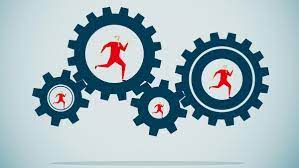When it comes to team productivity, there is no one-size-fits-all solution. The first step is to assess team members’ strengths and weaknesses in order to determine which tools and strategies will work best. Once the tools and strategies have been chosen, it’s important to implement them and then track the team’s progress to see if they are effective. In this blog post, we’ll cover all of these topics in detail so that you can start maximizing team productivity today.
Determine which tools and strategies will work best for your team. Do you need to implement new software?
Change the way you communicate. Create more structure around tasks and productivity. Once you’ve decided on the best course of action, it’s time to implement the tools and strategies. This is where many teams fail – they don’t follow through with the changes they’ve decided to make.
Finally, it’s important to evaluate the efficacy of your productivity-boosting efforts. Are you seeing the results you want? If not, why not? What can you do differently? By taking these steps, you can ensure that your team is as productive as possible.

Assessing team members’ strengths and weaknesses
It is important to assess each team member’s skills and abilities in order to determine how they can best contribute to the team’s productivity. There are a few different ways to go about this assessment. One way is to have the team leader or manager observe each team member during a project. Another way is to give each team member a short questionnaire about their strengths and weaknesses.
Once the team member’s strengths and weaknesses have been identified productivity, the team can then determine how each team member can best contribute to the team’s productivity. For example, if a team member is very good at writing code, they can be put on a project that requires a lot of coding. Or, if a team member is very organized, they can be put in charge of creating project timelines.
Finally, a plan is created to help each team member improve in their areas of weakness. This plan should be tailored to each individual team member, as different people will have different areas of weakness. For example, some people might need help with time management, while others might need help with being more assertive. Creating a plan specifically for each team member, can help them improve in their areas of weakness and boost the team’s overall productivity.
Determining which tools and strategies will work best for your team
There are a few things to consider when determining which tools and strategies will work best for your team. The first is to assess your team’s strengths and weaknesses. Once you’ve done that, you can determine which tools and strategies will work best. Another thing to consider is the type of project you’re working on. If it’s a long-term project, you’ll need different tools and strategies than if it’s a short-term project. Finally, you need to decide how you’re going to implement the changes and track the team’s progress. By following these steps, you can choose the best tools and strategies for your team and maximize productivity.
Implementing productivity-boosting tools and strategies
There are a few key things to keep in mind when it comes to implementing productivity-boosting tools and strategies. First, you’ll need to consider your team’s strengths and weaknesses. This will help you determine which tools and strategies will work best. You should also think about the specific goals you’re hoping to achieve – both short-term and long-term. Additionally, it’s important to take your company culture and values into account. And finally, don’t forget to learn from past experiences – both successes and failures.
When choosing the right tools and strategies, be sure to keep all of these factors in mind. Once you’ve selected the most effective options, it’s crucial to implement them effectively in order to see results.
Here are a few tips for successful implementation:
1. Communicate the goals clearly – Make sure that everyone on the team understands what goals you’re trying to achieve with the new tools and strategies for productivity. Otherwise, it will be difficult to measure success or track progress accurately.
2. Train your team members properly – If your team members don’t know how to use the new tools or strategies effectively, they won’t be able to maximize productivity. Be sure that everyone understands how the system works before expecting them to utilize it regularly.
3. Set achievable expectations – It’s important to set achievable expectations for what the new tools and strategies can realistically accomplish. Unreasonable expectations often lead to disappointment when they’re not met.
4. Be patient – Change takes time, so be patient as your team adjusts to the new way of doing things. Rome wasn’t built in a day and neither is a perfectly productive team.
5. Monitor progress on a regular basis – Regularly monitoring progress is essential for tracking whether or not the new tools and strategies are actually working as intended. Without routine check-ins, it will be difficult to make adjustments along the way if needed

Evaluating the efficacy of your productivity-boosting efforts
In order to evaluate the effectiveness of your productivity-boosting efforts, you’ll need to track a few key metrics. These metrics can include the number of tasks completed by your team each day, the number of hours spent working on each task, the number of errors made while completing tasks, and the amount of time spent on each task. You can track these metrics manually or using productivity tracking software.
Tracking the number of tasks completed by your team each day is a good way to see if your efforts are paying off. If you’re using strategies to boost team productivity like time management techniques or setting priorities, you should see an increase in the number of tasks completed each day. If you don’t see an increase, it may be necessary to adjust your strategies.
The number of hours spent working on each task is another important metric to track. If you’re using techniques like delegation or batching similar tasks together, you should see a decrease in the amount of time spent on each task. This decrease means that your team is spending less time working on each individual task, which leaves them more time to work on other tasks. If you don’t see a decrease in the amount of time spent on each task, it may be necessary to adjust your strategies.
The number of errors made while completing tasks is also an important metric to track. If you’re using quality control methods like proofreading or testing, you should see a decrease in the number of errors made while completing tasks. This decrease means that your team is making fewer mistakes and is therefore more productive. If you don’t see a decrease in the number of errors made, it may be necessary to adjust your strategies.
Finally, the amount of time spent on each task is an important metric to track. If you’re using efficiency-boosting strategies like streamlining processes or automating repetitive tasks, you should see a decrease in the amount of time spent on each task. This decrease means that your team is spending less time on each individual task, which leaves them more time to work on other tasks. If you don’t see a decrease in the amount of time spent on each task, it may be necessary to adjust your strategies.
In order to boost team productivity, teams need to focus on strengths and weaknesses, choose the best tools and strategies, implement them properly, and track progress regularly. By following these steps, teams can make significant improvements in their productivity levels.